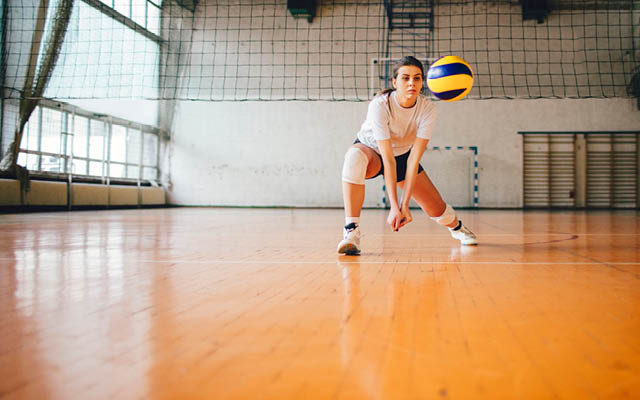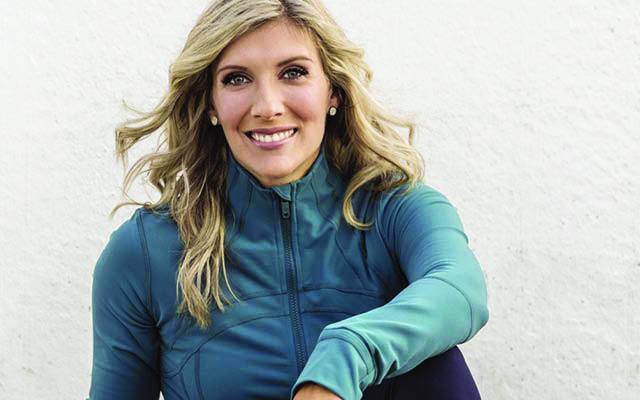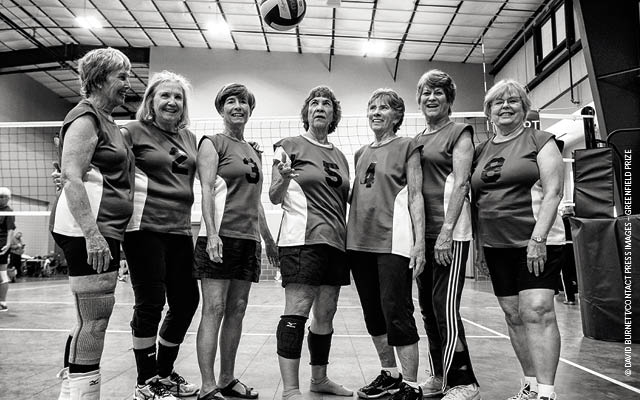Whether you’re spiking, digging, or diving, volleyball is all about power, speed, and coordination. Practice these fundamentals, and you can enjoy the full-body — and social — benefits of the sport.
“The beauty of volleyball is it uses all the movements,” says former professional beach player Curtis Jackson, author of Strength Training for Volleyball. “It’s a great sport for improving athletic ability that will cross over into many other sports.”
“It’s also stimulating for our brains, to be moving so dynamically,” he adds. “This improves proprioception and overall increases our quality of life.”
The game is a fun way to get and stay fit year-round, whether you play in the sand or on a court, indoors or outdoors. It has beginner-friendly simple rules and can be adapted to varying levels of skill and competitiveness.
The sport’s popularity has birthed intramural and recreational teams nationwide, meaning that if you’re not already playing with a group, like-minded teammates won’t be hard to find.
“Volleyball is the quintessential team sport,” says Olympic gold medalist Karch Kiraly, head coach of the U.S. women’s national volleyball team. “You can’t hold on to the ball. You can’t dribble it all the way from one basket to the other or run all the way down the field as soon as it comes to you. You have to move it to a teammate.”
Experts agree that finding a practice partner is the top way to up your volleyball game.
“General fitness is more important than being able to say, ‘Hey, I can squat 200 pounds,’ or ‘I can power clean 150 pounds,’” says University of Colorado head volleyball coach Jesse Mahoney. “And getting out and playing is probably the best drill any volleyball player can do.”
Still, doing drills on the court, at the beach, or in the gym can help you build an even stronger foundation for moving faster, jumping higher, and spiking harder.
Technique Tips & Drills
Skill Builders
Drill 1: Footwork Warm-Up
Quick, calm reflexes are foundational in volleyball. Before you can bump, set, or spike, you have to “read the oncoming ball in time to get your body in the right place,” says John Kessel, USA Volleyball’s director of sport development.
This two-part, 10-minute, footwork-focused warm-up will prime your body and mind to optimize your performance. It calls for a set of stairs, a jump rope, and a timer.
Stair Climbs
- Set a timer for five minutes.
- Climb a set of stairs at a brisk walking pace, then walk back down. Repeat for three sets, then rest for 30 seconds.
- Jog up and walk back down for three sets. Rest for 30 seconds.
- Run up and jog back down for another three sets. Rest for 30 seconds.
- Finally, sprint up the stairs as quickly as you safely can, and jog or walk back down, for a final three sets.
- Stop when the timer goes off, even if you haven’t completed the full circuit. Work on increasing your speed and efficiency to move faster for the full five minutes. Advance to taking two stairs at a time.
Jumping Rope
- Reset the timer and spend the next five minutes jumping rope.
- Begin with single jumps and increase the difficulty as you improve your technique and build endurance.
- If you’re experienced, practice alternating feet, imagining you are running in place: Instead of jumping over the rope with both feet at the same time, you’re landing on your right foot, and then the left, for each rotation. Stay on the balls of your feet, and mix it up with side-to-side and double jumps. (For more tips on jumping rope, visit “The Jump-Rope HIIT Workout”.)
Drill 2: Reactive Box Jumps
Reactive box jumps improve not only jumping ability, says Jackson, but also general explosive strength, quick feet, and overall mobility — all keys to a better volleyball game.
- Stand with feet shoulder width apart just in front of a box 12 to 24 inches tall. (If you’ve never done a box jump, start by jumping onto a low surface, such as a 45-pound rubber weight plate.)
- Drop into a quarter squat, swing your arms forward, and extend your hips, using momentum to propel yourself onto the box.
- Land softly with both feet completely on the box and stand fully upright.
- Step — don’t jump — back down to the floor.
- Do three sets of six repetitions, resting one minute between sets. (For more advice on improving your box-jump technique, check out “BREAK IT DOWN: The Box Jump”.)
Drill 3: Plyometric Squats
Strong calves, glutes, hamstrings, core, and quadriceps are all essential to jumping high and reacting quickly during a volleyball game.
- Keeping your chest high, with your neck in a neutral position and your feet pointed slightly outward, bend your knees and lower yourself into a comfortable and controlled squat position, ideally until your thighs are parallel to the floor.
- Launch your body upward, lifting your hands above your head as you jump into the air.
- Land in the same squat position as softly as possible; that’s one rep.
- Do three sets of 15 reps, resting one minute between sets.
Making Contact
Good contact can make up for other imperfections when serving (or spiking) the ball. Aim to hit “the middle of your open, flat, strong hand against the middle of the ball,” Kiraly says. “That’ll allow you to send the ball strong across the net on a low trajectory where it doesn’t cross the net by much and doesn’t give the opponents much opportunity to respond to your serve.”
Beach, Baby
Near some sand? Playing two-person beach volleyball is one of the fastest — and most fun — ways to improve your skills, says Jackson. With fewer players, you’re forced to cover more court while bumping, setting, spiking, serving, hitting, and defending.
“It will get you in shape faster, and it will get your muscles ready for playing indoors on a more forgiving surface.”|
Gear Essentials
MOLTEN RECREATIONAL VOLLEYBALL: Durable but soft to the touch, this ball is suitable for indoor and outdoor use. Available in a variety of fun, bright colors. $19.50 at www.moltenusa.com.
ZENITH ANKLE BRACE: Ankles can take a beating during volleyball. This brace’s lace-up, adjustable style makes it adaptable for almost any player. $29 at various retailers.
ADIDAS VOLLEYBALL ELITE KNEE PADS: Protect your knees with ease, thanks to the foam padding and stretchy fit of these knee pads. $30 at www.adidas.com.
This originally appeared as “Net Smarts” in the May 2020 print issue of Experience Life.




This Post Has 0 Comments